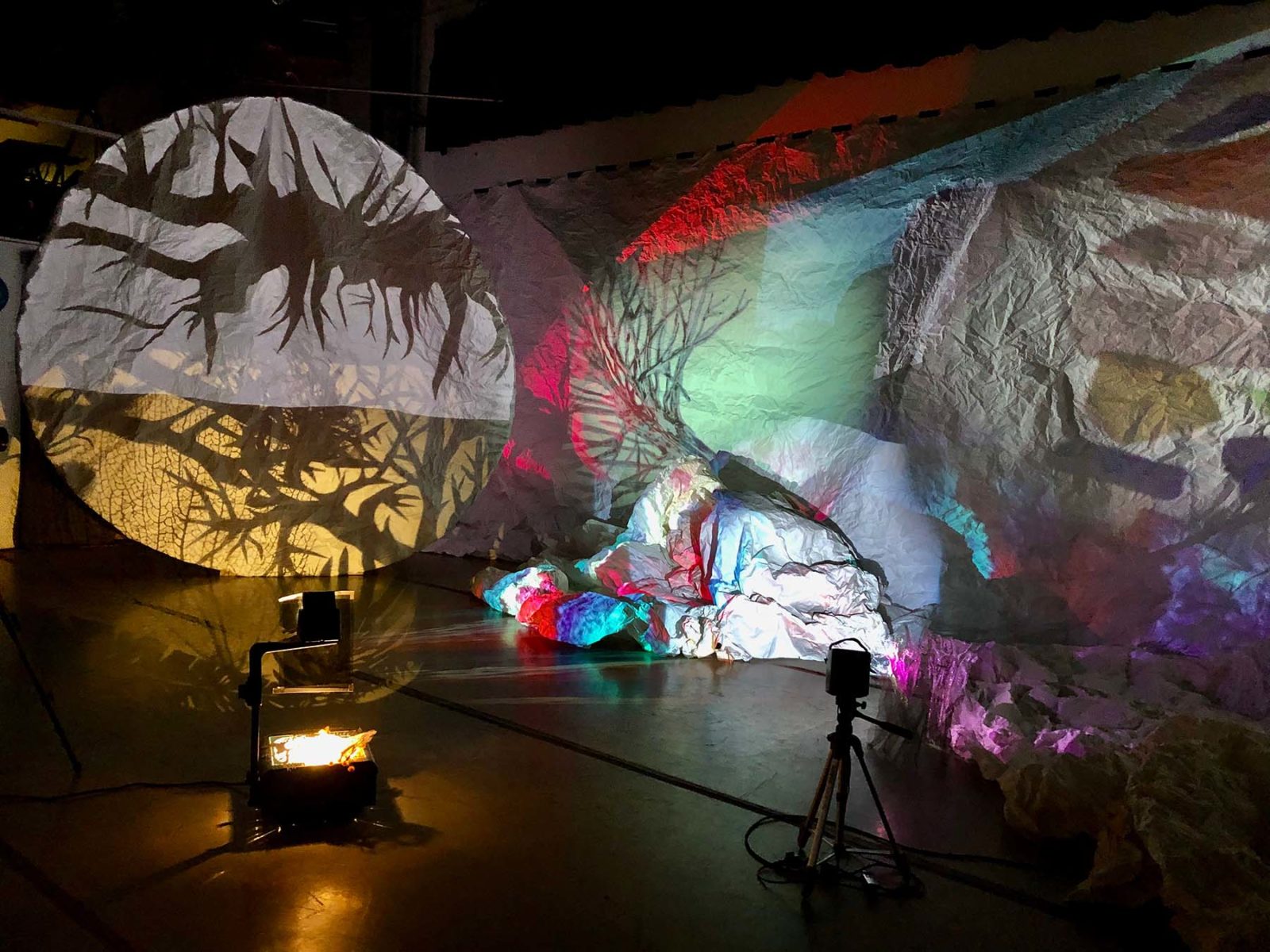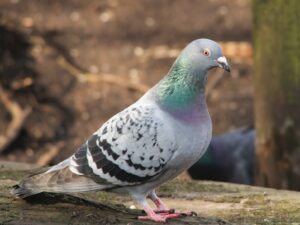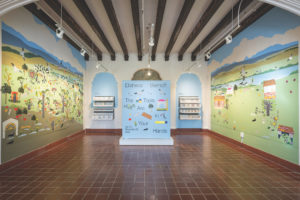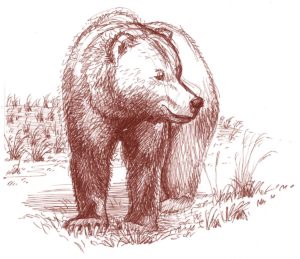During the 1970 brown pelican breeding season, only one chick out of 552 eggs on California’s Anacapa Island survived. The presence of the insecticide DDT in the marine food web caused brown pelicans, among other bird species, to lay eggs with shells so thin that embryo survival was difficult. By 1978, the California subspecies reached a record low of 466 nests. It seemed at the time like it might be the end for the brown pelican. But it wasn’t. Recent surveys suggest there are around 150,000 California brown pelicans and 650,000 brown pelicans worldwide. Because of environmental regulation, conservation efforts, and strong human advocacy, birds like the brown pelican survived what could have been their apocalypse.
Because of its near-extinction and resurgence, the brown pelican is a main character in The Endless End, an upcoming multimedia installation by Facing West Shadows (FWS) at Institute of Contemporary Art San José. The Alameda-based experimental shadow theater collective wants to encourage audiences to meditate on extinction, survival, and what we can learn from both. Because of successes like the brown pelican, FWS theatrical director Caryl Kientz says she “really eschews the idea that it is the end of the world and the apocalypse.” But at the same time, The Endless End will not offer a watered-down perspective on extinction. “We’re going to have to show some darkness,” adds artistic director Lydia Greer. “I think we’re going to have to go there.”
Though hope and darkness may seem to be contradictory messages for a single artistic project, presenting them raises important questions about how to represent environmental crises. How, for example, can we think about extinction in a way that acknowledges its gravity while avoiding falling into apocalyptic thinking? Can an emphasis on the darkness of ecological collapse help viewers imagine a better future?
The Endless End will be an immersive experience occupying a 750-square-foot gallery space and incorporating stop-motion animation, shadow puppet theater, sculpture, and music. Viewers will enter the installation through a tunnel that grows increasingly dark before they emerge into a large, cavernous room. Animations will swirl around the room, featuring a cast that might include threatened Bay Area species such as the San Joaquin kit fox, tidewater goby, saltwater harvest mouse, and bay checkerspot butterfly, alongside more globally recognizable extinct species such as the passenger pigeon and woolly mammoth.
The design of the installation is in part inspired by proto-cinema technologies and even cave paintings—especially the abstract lines that some scholars believe created a sense of movement when viewed by torchlight. Mock-ups and in-progress animations show an experience that feels primordial and raw. Animations of branches and fungi growing create a sense of vibrancy, but there is also a ghostly feel to the apparitions of extinct or endangered species projected on the cavern walls.
“There’s not a didactic element to it that’s going to tell people what to think and feel,” Kientz says. Nonetheless, in keeping with the circular spirit of the installation’s title, the artists conceived the abstract narrative in terms of cycles, such as darkness and light, past and present, and preservation and survival.
FWS proposes that visitors slow down and observe, but not in a detached or neutral way. Viewers can sit with the experience as it washes over them, and no immediate call to action is required—no comments, reshares, or likes. The artists argue that such contemplative observation leads to more radical ends. Rachel Carson’s Silent Spring, which galvanized action against DDT, was prompted by a letter from a friend who had observed birds dying on her property following insecticide sprayings. The Endless End is an invitation for us to find a place within our political lives for this kind of observation and committed connection to the lands we inhabit.
The current ecological crisis marks the end of many things—species, ways of being, possible futures. But, the artists say, it’s important to acknowledge that as serious as these endings are, they do not add up to the end. There is always a future; darkness and loss are not the same as apocalypse. The brown pelican’s demise never came, because people acted. And so, Greer says, the piece asks us, “How do we survive this?” If we predict we’ll have to give up, Kientz says, “we give up on our ideas and on our imagination.”





